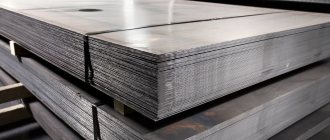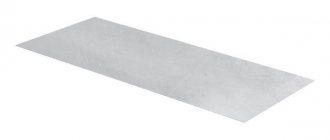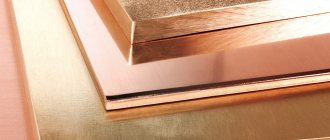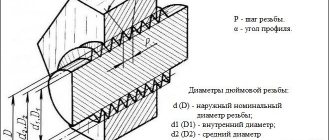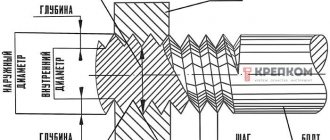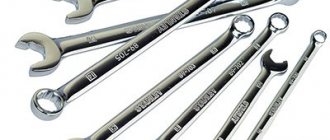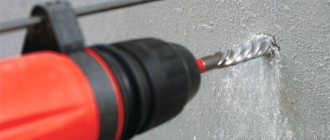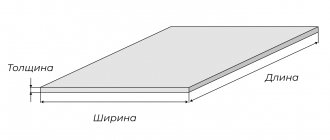The modern world is unthinkable without steel. This is a metal alloy of iron, carbon, and other components. Their ratio determines the brand, characteristics of the final material, and its application. Steel is supplied to production in the form of rolled products—sheets of a given thickness, produced by hot or cold methods. Technology directly affects the characteristics of the resulting material.
It is impossible to say which sheet is better, hot-rolled or cold-rolled. The answer depends on the requirements of the specific area for which the rental with the required parameters is selected.
Properties of hot rolled steel
Hot rolled sheets have a rough surface. The finished sheet has rounded, imprecise corners. If they are trimmed, the material is marked with the index O; if it is supplied without trimming, it receives the index HO. The thickness of this type of steel is uneven and is characterized by a high percentage of scale content.
Assortment of hot-smoked sheets according to GOST
Accepted standards divide hot-rolled sheet metal into types according to thickness and area of use. Currently there are GOST standards with numbers:
- 14637-89, which describes the parameters of hot-rolled thick sheets with a thickness of 4-160 mm of normal quality, produced from carbon steels;
- 16523-97, which determines the properties of thin hot-rolled steel up to 3.9 mm;
- 5520-79, which normalizes the production of hot-rolled plate products with a thickness of 4-160 mm, the basis of which is carbon, low-alloy, alloy steel, used for the manufacture of boiler equipment and industrial vessels;
- 5521-93, describing sheets of normal and increased strength with a thickness of 4-60 mm, produced from steel with an increased proportion of manganese for use in shipbuilding;
- 6713-91, which specifies the parameters of rolled plates of low-alloy grades for the construction of bridges (conventional and northern);
- R 55374-2012, responsible for bridge structures made of alloy steels.
Hot rolled sheet dimensions
Hot rolled steel is cut into sheets according to dimensions regulated by GOST 19903-2015. This standard specifies a thickness of 0.4-160 mm. It takes ordinary unalloyed or low-alloy steel as a basis. If the metal is wrapped in rolls, its thickness should be 1.2-12 mm.
The edge may or may not be trimmed. Accuracy is described as improved or normal for thicknesses up to 12 mm. Flatness options: normal, improved, high, extra high.
Rolls are formed from a single piece of fabric or two welded pieces. Acceptable fragment lengths are no less than 1:5. Other parameters for the lengths and number of pieces are discussed with the customer.
Sheet width - 0.5-3.8 m, length - 7.1-12 m.
Advantages and disadvantages
Advantages of the hot rolled method:
| Disadvantages of the hot rolled method:
|
Rolled products manufacturing methods
The process of producing sheet steel involves rolling steel in a rolling mill, where the metal is forced between rotating rollers. The difference lies in the workpiece and manufacturing temperature.
Hot rolled sheets are made from slabs of carbon, structural or alloy steel at elevated temperatures (from 920C). The metal softens, making it easier to give it the desired shape. New grains are formed, maintaining the high plasticity of the material. However, scale forms on the surface of the sheets, reducing the quality of the rolled surface. Because of this, it is more difficult to control the final dimensions of the product.
Cold-rolled steel is produced by rolling hot-deformed billets at room temperature. The surface of the workpieces is preliminarily cleaned of traces of scale by etching, shot blasting, or a combination of these methods. As a result, the resulting sheets have greater strength, but less ductility.
Properties of cold rolled steel
The basis for the production of cold-rolled sheets is hot-rolled sheets. They undergo additional processing to improve their characteristics:
- make edges, dimensions, thickness clearer;
- get rid of impurities - scale;
- give the surface smoothness, uniform color, and a characteristic metallic sheen;
- add rigidity to the material.
Unlike hot-rolled steel sheet, cold-rolled metal is thinner: thickness varies from 0.35 mm to 5 mm.
This material requires additional anti-corrosion treatment. It is usually coated with zinc, chrome, aluminum or other elements to prevent accelerated rusting.
Assortment of cold-rolled sheets according to GOST
Cold-rolled sheets are standardized by GOST numbers:
- 9045-93 - rolled products for cold stamping or production of car bodies. Upon request, the surface receives an increased, high or especially high category.
- 16523-97 - standards for cold-rolled sheets made of black carbon steel. The standard describes three types of surface finishing.
- 19904-90 - production of rolled products with a thickness of 0.35-5 mm. The document specifies the width of the rolled products produced in the form of cards equal to 500-2350 mm, and the length - 1-6 m. The dimensions of the rolls are not limited, only the thickness is standardized - up to 3.5 mm.
Advantages and disadvantages
Advantages of the cold rolled method:
| Disadvantages of the cold rolled method:
|
This leads to the fact that the choice between cold-rolled sheet and hot-rolled sheet is determined by the area of application of the metal products.
Differences in the properties of hot-rolled and cold-rolled steel sheets
The main difference between cold-rolled sheet and hot-rolled sheet is quality, thickness and price.
Theoretically, the minimum thickness of hot-rolled metal is 0.4 mm, but in practice it is rarely less than 1.2 mm. The maximum value reaches 20 cm. Low quality is due to the use of inexpensive steel grades, which is reflected in the price.
Unlike hot-rolled sheets, cold-rolled sheets can be rolled out to the thinnest foil. In construction and industry, materials from 0.35 mm are used. The upper limit here is 5 mm. This type of metal is stronger and stiffer, but it is more vulnerable to corrosion, so it is galvanized or protected in other ways. Since achieving these properties requires additional production steps, the price of cold rolled steel is higher.
| Options | Cold rolled sheet | Hot rolled sheet |
| GOST | 19903-2015 (19903-74) | 19904-90 |
| Production temperature | from 1150С - 1200С to 900С - 950С | 450С – 550С |
| Thickness (mm) | 0,35–5 | 0,4–160 |
| Number of thickness classes (mm) | 3 (+/- 0.02 to +/- 0.25) | 2 (+/- 0.05 to +3.1 and -4.2) |
| Width (mm) | 500 – 2 350 | 500 – 2 200 |
| Number of width classes (mm) | 3 (+2 to +10) | 1 (+6 to +75) |
| Length (mm) | 1 000 – 6 000 | 710 – 12 000 |
| Number of accuracy classes by length | 3 (+2 to +25) | 1 (+10 to +75) |
Application area
Cold rolled steel sheet is used in the automotive industry. The bodies of passenger cars, fuel tanks, truck cabins, pallets, engine covers, fasteners, and protective devices for the engine compartment are made from rolled products of 1-2.5 mm thickness.
- Tin has a thickness of up to 0.5 mm. It is obtained by cold deformation on heavy-duty roller-type presses. The resulting sheets are cut with industrial scissors into strips up to 1.5 m wide. Banks, partitions are stamped from them, fencing, and decoration elements are made.
- To produce household enamel cookware, steel sheets are annealed in special furnaces at high temperatures. The steel becomes more ductile and less effort is required for stamping. After annealing, the sheets are cleaned chemically; stamped forms are covered with a layer of enamel.
Corrugated sheeting is a thin sheet of metal coated with a protective layer of zinc. To increase mechanical strength and protect against damage, additional stiffeners are formed.
Corrugated sheeting is widely used in construction for constructing fences, creating fences, temporary barriers, installing roofs, sloping surfaces, and for protecting the outer walls of buildings from precipitation.
Differences in steel sheet production
The production of hot-rolled and cold-rolled sheets follows similar technologies. The difference lies in the number of production processes. First, raw materials are sent to the furnace in the form of ingots or slabs (slab-shaped pieces), where they are melted at a temperature of 900-1200 degrees Celsius (heating depends on the chemical composition, dimensions of the slabs, and steel grade). Then the scale is loosened and the oxide is removed. The next steps are in order:
- the hot workpiece is crimped on all sides so that its dimensions meet the standards;
- the leveled ingot is sent to the roughing stand and then to the finishing stand, where it is compressed by rotating shafts, the distance between which determines the thickness of the rolled product;
- metal strips obtained after processing by rollers are rolled or cut;
- At the final stage, the workpieces undergo heat treatment in furnaces - they are hardened, fired, and cleaned.
At this stage, hot-rolled steel is ready for tempering, sale or use in further production.
The cold rolled sheet receives additional processing. It is made from hot-rolled steel, which is cleaned of remaining scale mechanically or chemically. Often both methods are combined.
Mechanical cleaning is carried out by grinding rolled metal with spherical metal particles supplied by an air stream. This removes various contaminants carried away with the air.
Chemical cleaning involves immersing rolled steel in a bath with a 25% solution of hydrochloric acid, which corrodes the smallest contaminants, giving the surface of the material smoothness and cleanliness.
After processing to obtain cold rolled steel, the material goes through the following processes:
- edge trimming;
- oiling before rolling;
- crimping with rollers to the required thickness;
- firing at temperatures up to 730 degrees Celsius to increase strength;
- cooling;
- compression on the temper mill to 3% to increase hardness;
- if necessary, final trimming of the edges.
Additionally, rolled products can be galvanized.
Areas of use of hot-rolled and cold-rolled metal
| Hot-roll sheet | Cotton sheet |
Hot rolled steel sheets are used in:
This type of metal products is necessary where steel is needed, but there is no increased demand for aesthetics. For example, the construction of bridges, boilers, furnaces, structures with bolted or welded connections. | Cold rolled sheets are needed for:
|
Hot-rolled and cold-rolled steel serves as the basis for the profiles of metal frame structures, which we use for the installation of prefabricated tent hangars. Depending on the project and loads on the structure, we offer 3 options for metal frames. Read more about this at the link.
Which sheet should I choose?
When choosing sheet metal, you need to take into account the scope of its application. For the manufacture of rough building structures, you can choose hot-rolled sheets, which are not aesthetically pleasing, but provide high strength of shaped products. To produce steel tiles or furniture from steel sheets, it is better to use cold-rolled products that do not have scale and other defects.
If you need a thick sheet of cold rolled iron, then a batch of materials can be ordered individually. Companies extremely rarely produce such steel in series - buyers order thick sheets mainly for the manufacture of profiles and rough structures.
Source
